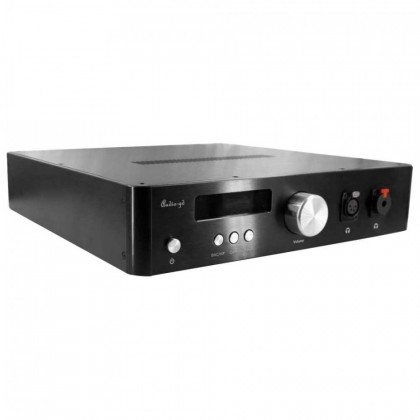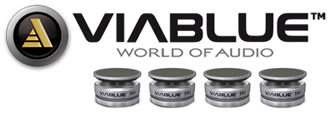New Customer?
Create your accountNo products
Prices are tax included
By buying this product you get 134 loyalty points
Accessories for this product
AUDIO-GD R-28 NOS
DAC R2R DSD Natif I2S ACSS Amanero / Preamplifier / Headphone Amplifier
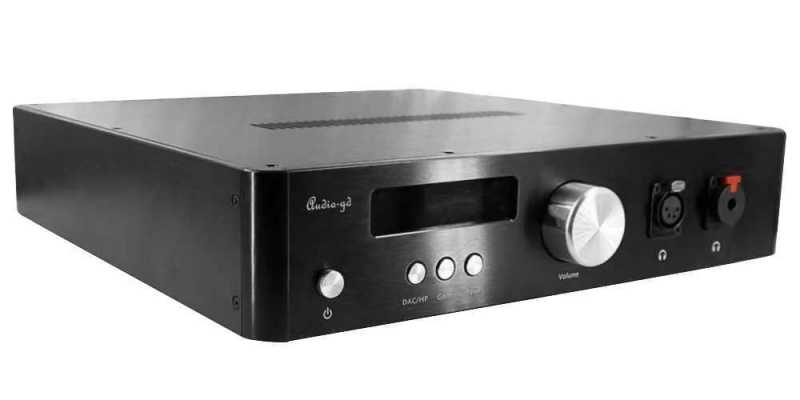
The R28 Audio-GD is an all-in-one unit of rare versatility that merges in a single housing a very high quality full R-2R DAC with a discreet balanced preamplifier and a high precision headphone amplifier. This extremely comprehensive element can make every audio device found in a sound installation benefit from Audio GD expertise. Several sources (including analog) can be connected, giving the R-28 a potential to become a real cornerstone of any ambitious audio system; facilitating wiring and connections while ensuring a rigorous and clean signal processing regardless of the source. Its compatibility with the most advanced audio formats, plus its pannel of inputs and outputs provide impressive interoperability with all equipment and the most popular fild of digital audiophile world.
NOS version
The NOS version of the Audio-GD R-28 benefits from new features and enhancements, with the aim of delivering ever more precise and richer sound reproduction. As its name suggests, this version of the R2R R-28 DAC operates in NOS (Non Over Sampling) mode. Its design is specially optimized for this purpose. It doesn't need the main clock signal to operate, thus avoiding excessive jitter. Technology integrated directly into the R-28 NOS digital processor guarantees exact synchronization of data and clock. In addition, galvanic isolation is used to isolate the digital inputs and the digital processor for clear, precise sound reproduction.
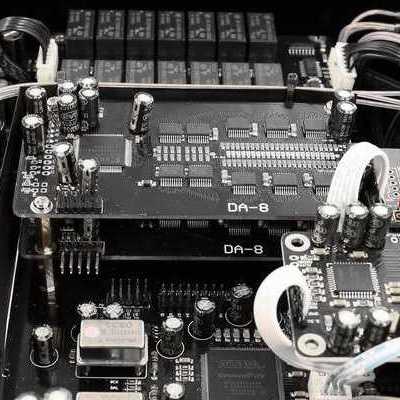
Fully R-2R discrete conversion stage
This stage is divided into four DA-8 modules working in parallel. This design is able to process an entire 32 bit digital signal during a single clock cycle, preventing a potentially audible accumulation of inaccuracies and allowing a single bit correction scale (rather than by multiple bits scale). This will play a significant role in achieving a high dynamic range (including a SNR> 120dB) while keeping distortion and jitter at an extremely low level.
This design is particularly interesting for it lowers the sensitivity to jitter to a virtually insignificant amount as regard to ordinary Sigma Delta DAC. Clock noise, parasites of digital / analog conversion and other unwanted frequencies that may give rise to distortion or aliasing are treated with tremendous efficiency, which increases the performance at all subsequent levels of the chain.
Digital circuit built for audio quality
The digital circuit of R28 uses specifically selected and assembled quality components to maximize the understanding and decoding of the audio stream. A TCXO clock, a logic circuit FPGA Altera and an Xilinx input circuit owner on FIFO chip are working together on all digital inputs.
In this configuration, the FPGA can reclock the clock signal through the FIFO design on the rate of its own internal clock, which allows a more efficient rejection of clock noise and corrects digital imperfections accumulated from the audio source.
This digital circuit not only provides digital filtering of high quality, but it also incorporates an integrated oversampling function (x2 / x4 / x8) as much as 4 NOS modes (real NOS with analog filter 6dB). The unit is user configurable to comply with listening preferences as to the specificities of the rest of the audio system.
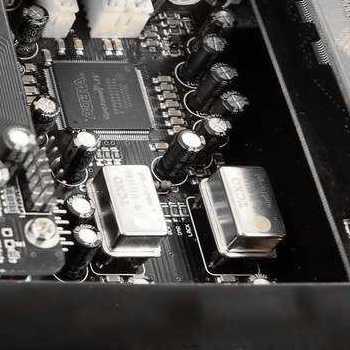
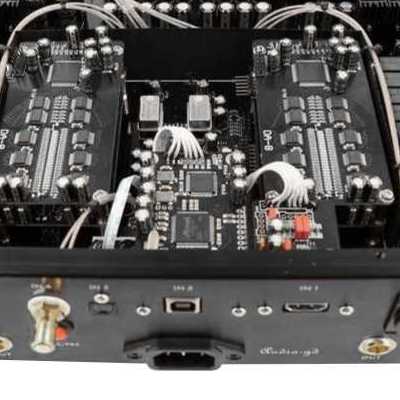
Amanero USB interface 384kHz / 32bit
The USB interface Amanero Combo 384 is an asynchronous design very efficient to minimize noise generated from external sources. To do this, it works with a pair of low phase noise TCXO oscillators. A fine design with very good results when it comes to isolating the audio stream in all its clarity.
The interface has it own internal power-supply, which eases the pressure and lower interferences to highlight the micro-details without over-treating the digital signal transmitted via USB by an unclear dithering. This design thus preserves the sharpness of the impulse image and allows a deep soundstage with rigorously controlled dynamics.
In addition, through this interface, the R-28 is able to access the PCM format 44.1 / 48 / 88.2 / 96 / 176.4 / 192 / 352.8 / 384kHz and DSD 2822 Mhz, 3,072 / 5,644 / 6,144 MHz
Discrete balanced analog output & ACSS
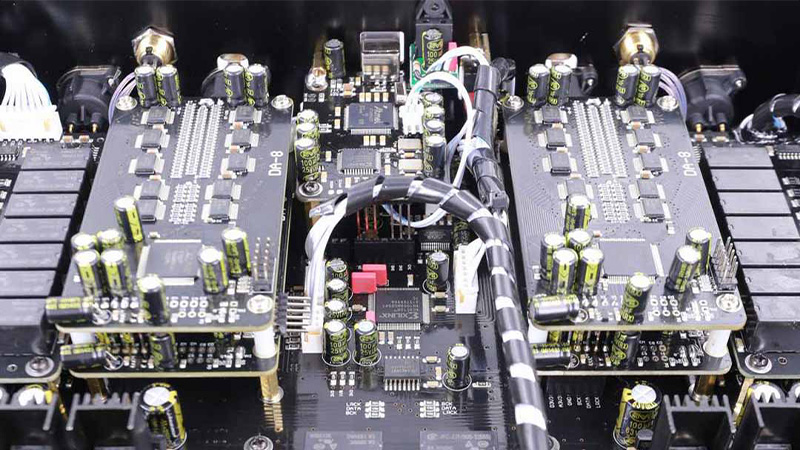
The analog output stage of R-28 is composed of several amplification stages, each of them completely discrete and based on matching transistor pairs. 4 pairs of transistors 15W provide excellent ability to drive the signal.
True to the tradition of Audio-GD, R-28 has an analog current output ACSS Mini XLR completely protected from feedback and with very low output impedance. This unique design is prized for its fine detail and for its superior sound stage in the final restitution.
The device has an integrated volume control operating on 4 channels. These are controlled by digital signal and control resistors for analog setting. Resistors KOA / Vishay work in parallel to provide a tolerance of 0.05%.
It is possible to bypass the preamplifier with a single button on the rear of the housing in order to output the sound DAC as it is and output to an external controller.
Effective power supply stage
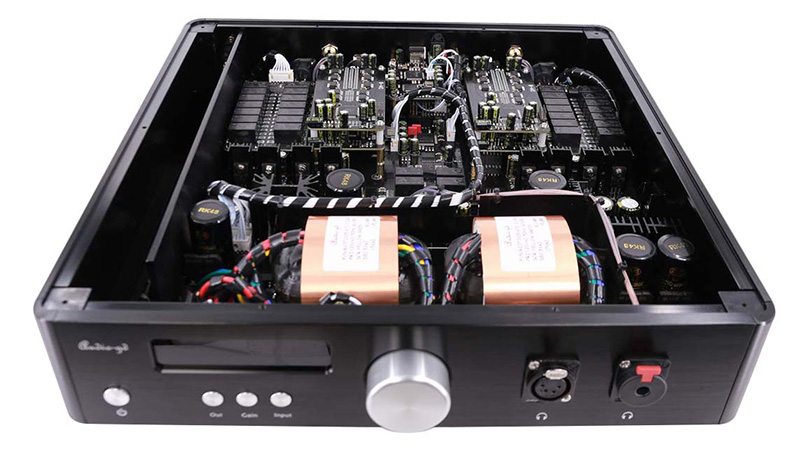
The R28 operates high quality R-Core transformer, low noise and low magnetic noise. This supply is divided into 11 groups that are themselves selected for their ultra-high speed and ultra-low noise.
A double stage technology ensures the continuity and the cleanliness of the signal towards all digital stages.
Moreover, the analog amplification stages takes advantage of two pure class supply blocks A.
Versatile connectivity panel
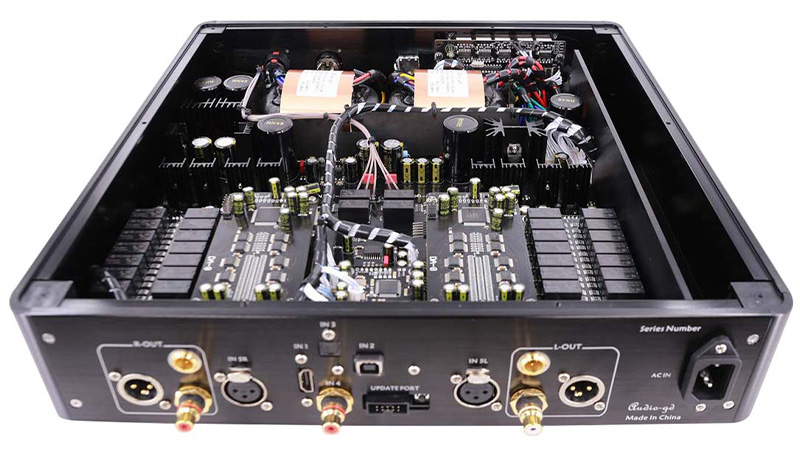
Bringing together the audio sources, R-28 has a full hyper-connectivity that will greatly facilitate its integration into all types of sound installations, starting with the most ambitious.
There is an HDMI input (I2S), USB, Optical and Coaxial, but also analog inputs XLR that will bring together digital and analog sources on this same device to allow a greater control from a single device.
As regards to outputs, R-28 is equipped with an RCA connectivity / ACSS and XLR (balanced). All these options ensure maximal interoperability despite its high technical level.
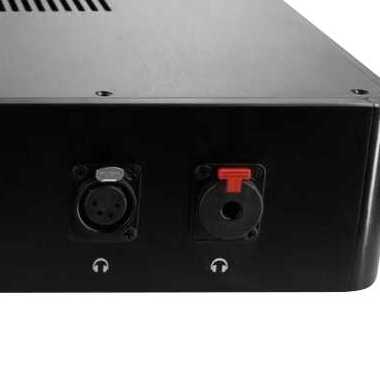
Output modes and integrated headphone amplifier
The DAC / HP button controls output mode. This allows to switch between the following modes:
- P: output by XLR / RCA / ACSS (rear). The XLR and RCA connectors can be connected simultaneously to two separate amplifiers.
- H: front output on headphone
- S: super unbalanced output (raise the output power to achieve a similar level to a balanced circuit. Not recommended with balanced helmet.).
Aluminum remote control included
The device is delivered with a massive aluminum remote control of the most beautiful effect. It allows you to comfortably control the basic functions of the R-28 without having to move around or disturb your listening experience.
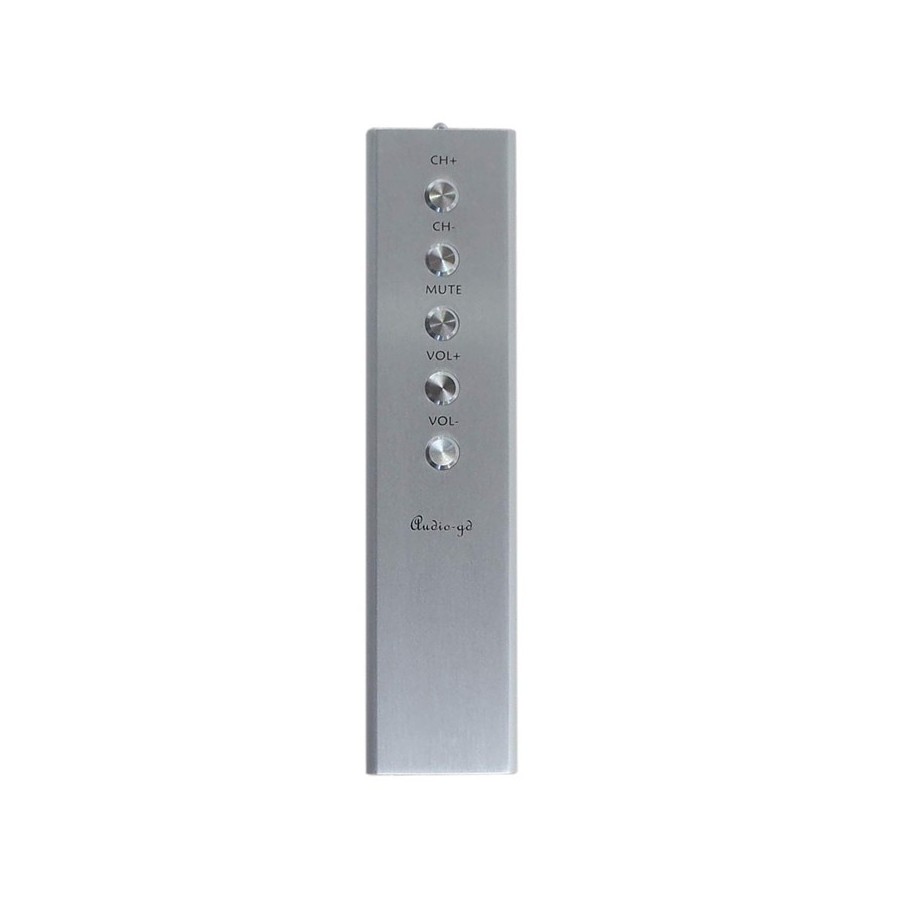
Technical characteristics
| Specifications | |
|---|---|
| Type | R-2R DAC Headphone amplifier Preamplifier |
| Inputs | Digital: HDMI (I2S) / USB / Optical / Coaxial Analog: XLR |
| Outputs | RCA / XLR / ACSS |
| SNR | > 120dB |
| THD+N | <0.003% |
| Gain | L mode : +12dBH H mode : +22dBF |
| Volume control | Yes (100 high levels Exponential) |
| Balancing channels | < 0.05dB |
| Frequency response | 20Hz - 20KHz (< - 0.5DB) |
| Output Level | Headphone output 19V RMS (balanced) Variable preamp output: 10V RMS (balanced) DAC fixed output: 5V RMS (balanced) |
| Headphone Output Power | 9500mW / 25 Ohm 8000mW / 40 Ohm 3500mW / 100 Ohm 1200mW / 300 Ohm 600mW / 600 Ohm |
| Output Impedance | Headphones: 1 Ohm DAC / preamp: 5 Ohm |
| Input Sensitivity | 0.5Vp-p (75 Ohm Coaxial) 19dBm (Optical) |
| Support OS | Windows (with driver), OSX, Linux, ISO |
| Supported sample rates | USB & IIS : 44.1kHz - 384kHz /32Bit DSD64-512 Coaxial mode: 44.1, 48, 88.2, 96,192kHz Optical mode: 44.1, 48, 88.2, 96kHz |
| Power Supply | 220-240V AC50/60Hz |
| Power consumption | 35W |
| Weight | 8.5kg |
| Dimensions | 360 x 360 x 85 mm |
| Housing | Aluminum |
| Accessories | Power cable x1 USB cable x1 Aluminium remote control x1 |
| Input | USB |
| Input | SPDIF |
| Input | I2S via HDMI |
| Input | XLR |
| Input | Optical |
| Output | XLR |
| Output | RCA |
| Output | ACSS |
| DAC / ADC Chip | R2R LADDER DAC |
| Max sampling rate | 384kHz |
| Max sampling rate | DSD512 |
| Color | Black |
| Class | Class A / AB |
| Networking | No |
| Remote Control | Yes |
No reviews at this time.


